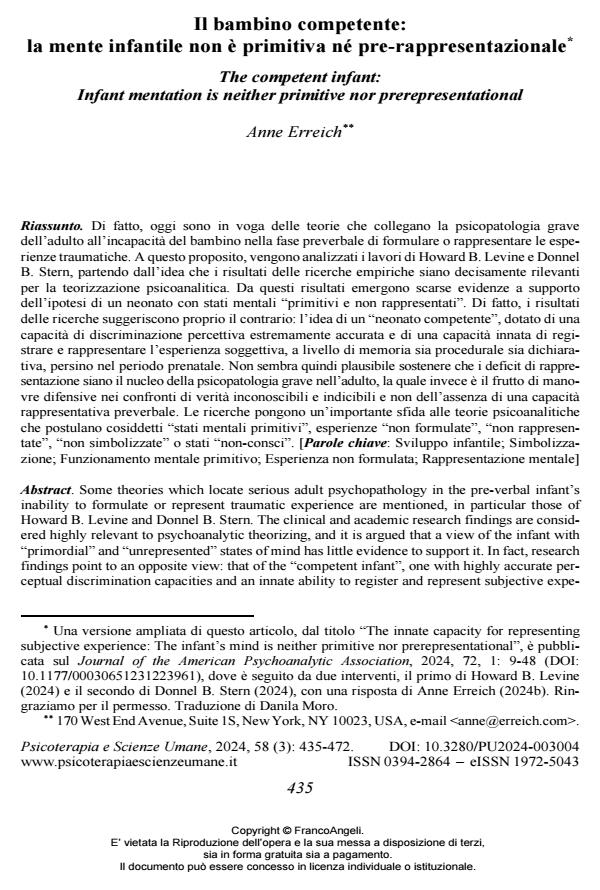The competent infant: Infant mentation is neither primitive nor prerepresentational
Journal title PSICOTERAPIA E SCIENZE UMANE
Author/s Anne Erreich
Publishing Year 2024 Issue 2024/3
Language Italian Pages 38 P. 435-472 File size 199 KB
DOI 10.3280/PU2024-003004
DOI is like a bar code for intellectual property: to have more infomation
click here
Below, you can see the article first page
If you want to buy this article in PDF format, you can do it, following the instructions to buy download credits

FrancoAngeli is member of Publishers International Linking Association, Inc (PILA), a not-for-profit association which run the CrossRef service enabling links to and from online scholarly content.
Some theories which locate serious adult psychopathology in the pre-verbal infant’s inability to formulate or represent traumatic experience are mentioned, in particular those of Howard B. Lev-ine and Donnel B. Stern. The clinical and academic research findings are considered highly rele-vant to psychoanalytic theorizing, and it is argued that a view of the infant with “primordial” and “unrepresented” states of mind has little evidence to support it. In fact, research findings point to an opposite view: that of the “competent infant”, one with highly accurate perceptual discrimina-tion capacities and an innate ability to register and represent subjective experience in both proce-dural and declarative memory, even prenatally. Given the infant’s competencies, it seems implausible to hold that representational deficits are at the heart of serious adult psychopathology, which is instead seen to be the result of defensive maneuvers against unknowable and unspeakable truth rather than the absence of a pre-verbal representational capacity. Current research findings pose a significant challenge for psychoanalytic theories which espouse so-called “primitive mental states”, non-conscious” states, or “unrepresented”, “unsymbolized”, “unformulated” experience.
Keywords: Child development; Symbolization; Primitive mentation; Unformulated experience; Mental representation
Anne Erreich, Il bambino competente: la mente infantile non è primitiva né pre-rappresentazionale in "PSICOTERAPIA E SCIENZE UMANE" 3/2024, pp 435-472, DOI: 10.3280/PU2024-003004